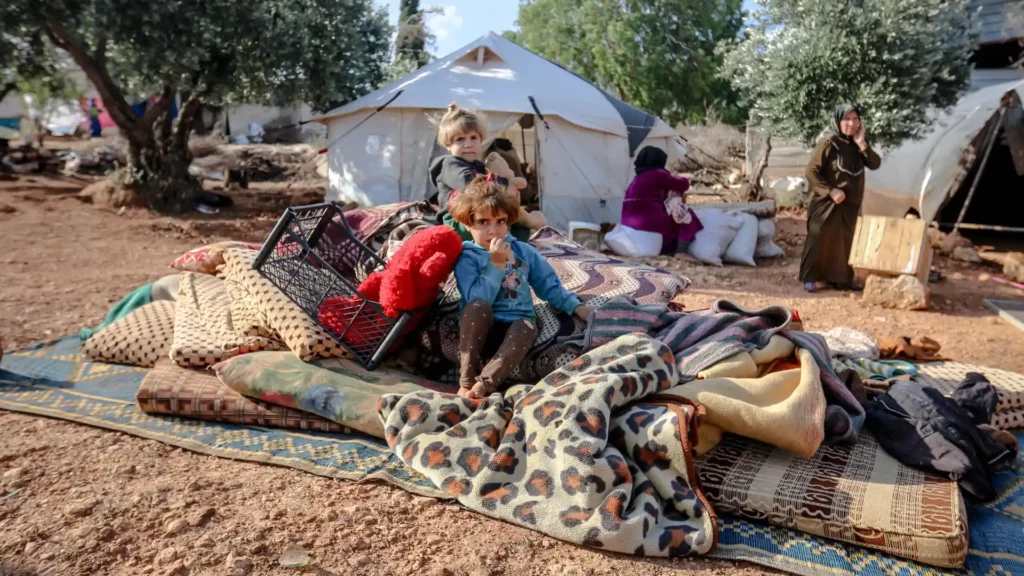Conflict, violence, and constant human rights violations remain the major reasons behind the forced displacements
The United Nations High Commissioner for Refugees (UNHR) released a report recently that showed at least 117.3 million people, or one in 69 individuals globally, are forcibly displaced.
Conflict, violence, and constant human rights violations remain the major reasons behind the forced displacements and in the first three months of 2024, the number has steadily increased and has possibly surpassed 120 million by the end of April.
“Behind these stark and rising numbers lie countless human tragedies. That suffering must galvanize the international community to act urgently to tackle the root causes of forced displacement,” stated United Nations High Commissioner for Refugees Filippo Grandi.
Of the 117.3 million individuals who have been forcibly displaced, 68.3 million are domestically displaced within their nations as a result of conflict or other crises. In Gaza, for example, the United Nations estimates that over 1.7 million people have been displaced by Israel’s ongoing bombings.
In 2023, there were 43.4 million international refugees, an increase of 7% from the previous year. The relocation in Sudan and the ongoing conflicts in Ukraine and other areas are the main causes of the surge.
As of the end of the previous year, 6.9 million people were awaiting a judgment, the majority of them were asylum seekers—those fleeing oppression or fear of violence in their home country. That’s a 26% increase over the previous year.
Loss of Land and Identity
The United Nations created the Refugee Convention in 1951 to protect the rights of refugees in Europe after World War II. In 1967, the agreement was expanded to address worldwide displacement.
At the time the Refugee Convention was established, there were 2.1 million refugees. By 1980, there were more than 10 million refugees registered with the United Nations High Commissioner for Refugees for the first time. The number of refugees doubled as a result of the wars in Ethiopia and Afghanistan in the 1980s, and by 1990, it had reached 20 million.
In the 20 years that followed, the number of refugees remained largely stable.
However, the civil wars in South Sudan and Syria, along with the US invasions of Afghanistan in 2001 and Iraq in 2003, meant that by the end of 2021, there would be more than 30 million refugees globally.
The unrest in Ukraine began in 2022 and has forced 5.7 million people to leave their nation in less than a year, creating one of the largest refugee crises since World War II. Six million Ukrainians were still being forcibly displaced from their homes by the end of 2023.
An extra 1.5 million people became refugees in 2023 as a result of the fighting in Sudan between the Sudanese army and the Rapid Support Forces. Sudan took in a considerable number of Syrian refugees prior to the conflict.
The number of Syrian refugees in Sudan decreased as a result of the conflict from 93,500 in 2022 to 26,600 in 2023. After the war, which lasted for more than a year, thousands of people are still being displaced every day.
The most recent Israeli shelling of the Gaza Strip has caused enormous suffering for the Palestinian people. United Nations High Commissioner for Refugees believes that between October and December 2023, up to 1.7 million people—more than 75% of the population—may have been internally displaced within the Gaza Strip, with many of them needing to flee numerous times.
The humanitarian situation in the Gaza Strip is dire, with 2.3 million people living there and the risk of hunger.
Where do Refugees come from?
Only five nations accounted for nearly three-quarters (72%) of all refugees: Afghanistan (6.4 million), Syria (6.4 million), Venezuela (6.1 million), Ukraine (6 million), and Palestine (6 million).
People who are compelled to depart their native nations due to persecution or a grave threat to their life, physical integrity, or freedom are considered refugees under international law.
Almost 70 percent of refugees and other individuals in need of international protection lived in countries that bordered their own.
Iran (3.8 million), Turkey (3.3 million), Colombia (2.9 million), Germany (2.6 million), and Pakistan (2 million) are now the countries in the world with the largest refugee populations.
While Syrians make up the majority of migrants in Turkey, Afghans make up the majority of refugees in Iran and Pakistan.
Over the past ten years, the number of refugees has increased in these major host countries, with the exception of Turkey, where it has declined by 14% since 2021.
Germany is the only notable host country that does not border the main refugee-originating countries. The nations having the most refugees in Germany at the end of the year were Syria (705,800), Afghanistan (255,100), Iraq (146,500), and Ukraine (1.1 million).
